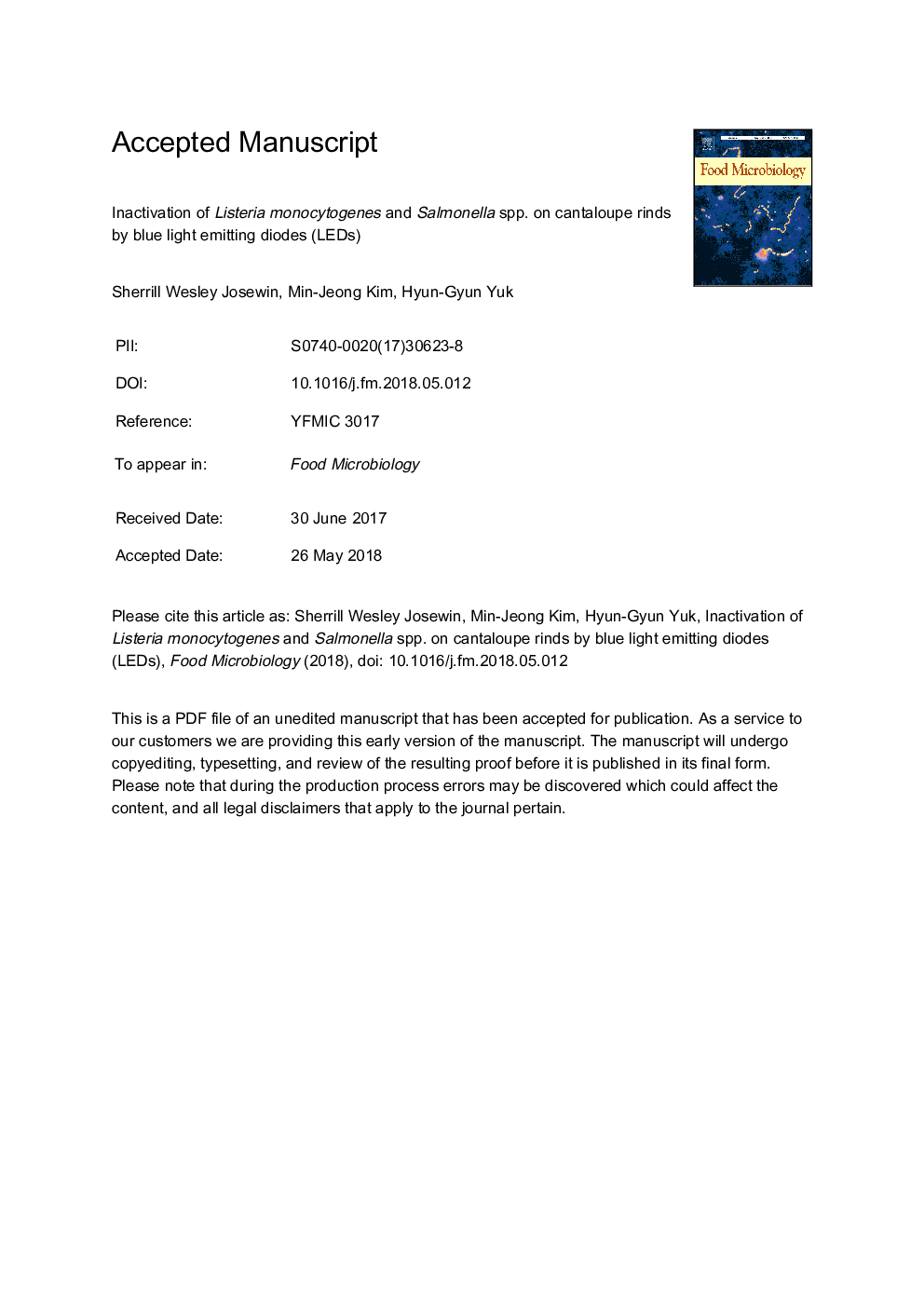| کد مقاله | کد نشریه | سال انتشار | مقاله انگلیسی | نسخه تمام متن |
|---|---|---|---|---|
| 8843435 | 1616225 | 2018 | 29 صفحه PDF | دانلود رایگان |
عنوان انگلیسی مقاله ISI
Inactivation of Listeria monocytogenes and Salmonella spp. on cantaloupe rinds by blue light emitting diodes (LEDs)
دانلود مقاله + سفارش ترجمه
دانلود مقاله ISI انگلیسی
رایگان برای ایرانیان
موضوعات مرتبط
علوم زیستی و بیوفناوری
علوم کشاورزی و بیولوژیک
دانش تغذیه
پیش نمایش صفحه اول مقاله

چکیده انگلیسی
This study evaluated the potential of blue light-emitting diodes (LED) of wavelength 405 and 460â¯nm in combination with sodium chlorophyllin to inactivate Listeria monocytogenes and Salmonella spp. on cantaloupe rind. A cocktail culture of L. monocytogenes or Salmonella spp. strains was surface inoculated onto cantaloupe rinds to reach a final concentration of 4 log CFU/cm2 and dip-treated in a 100â¯Î¼M sodium copper chlorophyllin solution. The cantaloupe samples were then exposed to 405 or 460â¯nm LEDs at a total dose of 1210â¯J/cm2 and 5356â¯J/cm2, respectively, at 4 and 20â¯Â°C. Results showed that the antibacterial efficacy against both pathogens on cantaloupe rinds between LED alone and LED with the chlorophyllin were statistically similar with bacterial inactivation ranging from 1.1 to 3 log CFU/cm2 in most of the cases or the difference was only minimal. A similar inactivation of 3 log CFU/cm2 was obtained in the case of L. monocytogenes and Salmonella spp. when illuminated by 405â¯nm LEDs while the inactivation of L. monocytogenes was higher than Salmonella spp. when illuminated by 460â¯nm LED. The δ value, a modified Weibull model parameter defined as the time (h) taken to reduce the bacterial population by 90%, was computed to compare the inactivation rates of the conditions. It was inferred that illumination with 405â¯nm LED required a lower δ value than 460â¯nm LED illumination (Pâ¯<â¯0.05) for the inactivation of L. monocytogenes at 20â¯Â°C and Salmonella spp. at 4â¯Â°C. Thus the findings of this study indicate a promising application of blue LEDs to inactivate these pathogens on the surface of cantaloupe, minimizing the risk of listeriosis and salmonellosis by consumption of cantaloupe.
ناشر
Database: Elsevier - ScienceDirect (ساینس دایرکت)
Journal: Food Microbiology - Volume 76, December 2018, Pages 219-225
Journal: Food Microbiology - Volume 76, December 2018, Pages 219-225
نویسندگان
Sherrill Wesley Josewin, Min-Jeong Kim, Hyun-Gyun Yuk,